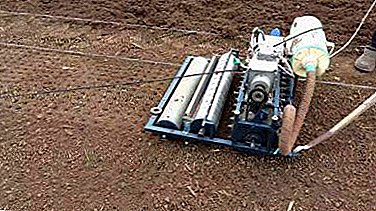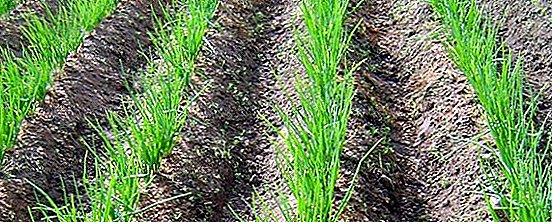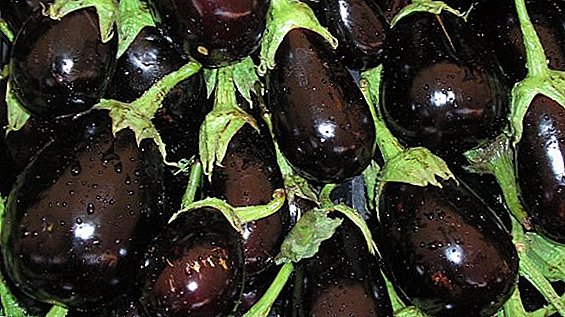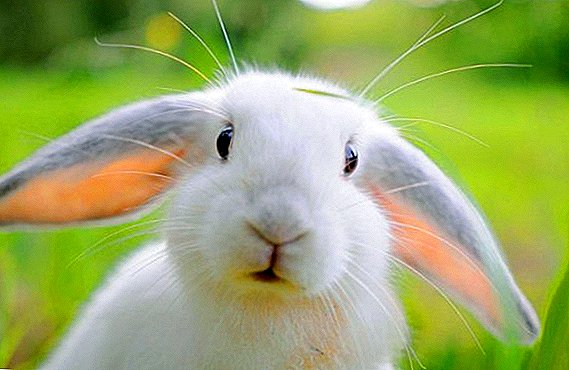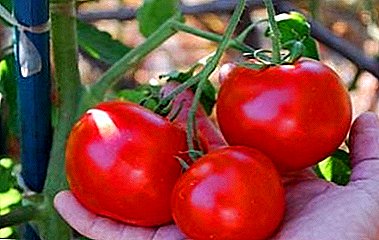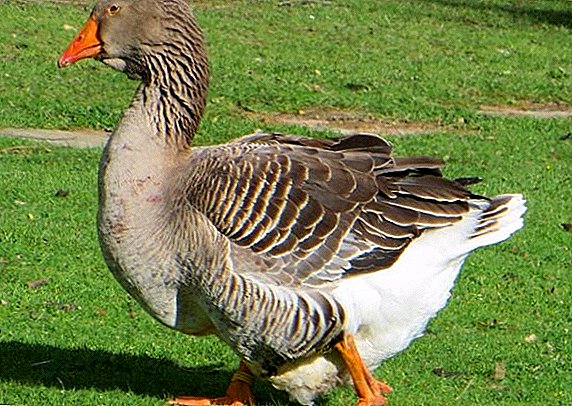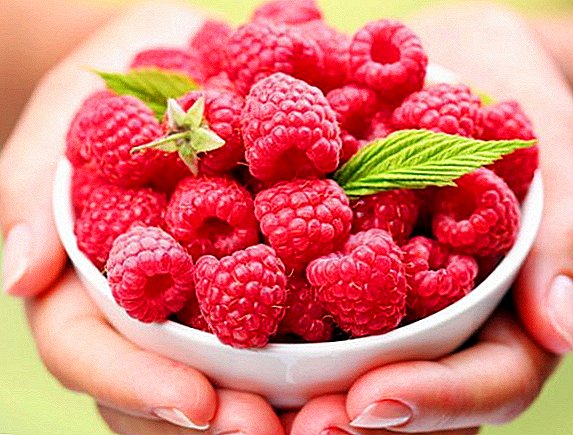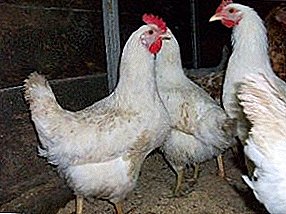
Chickens breed Hercules are considered one of the most versatile meat and egg chickens.
These birds grow to impressive size, but at the same time they rush perfectly, which allows using them as not only meat, but also egg breed.
In addition, Hercules are great for backyard content.
Chickens Hercules is a very young breed. It was bred in 2000 by breeders from the Institute of Scientific Research Institute Borky on the basis of the Ukrainian and foreign gene pool of egg and meat chicken breeds.
To obtain the breed used the method of complex interbreeding.
Breed breed engaged Professor S. A. Bondarenko. It took him about 10 years to study other breeds of chickens whose genetic material could help in the creation of a new highly productive breed. New Hercules chickens almost immediately aroused interest among large and private farms because of the excellent combination of egg and meat characteristics.
General description of Hercules hens
 The name was due to the impressive body weight. Birds are characterized by a massive body with a wide back. It smoothly passes into a not very large tail, located at an obtuse angle relative to the back of Hercules. The tail has long and rounded braids of a dark or light color depending on the color of the plumage.
The name was due to the impressive body weight. Birds are characterized by a massive body with a wide back. It smoothly passes into a not very large tail, located at an obtuse angle relative to the back of Hercules. The tail has long and rounded braids of a dark or light color depending on the color of the plumage.
The chest of Hercules is wide and full. The belly of the cocks is rounded, but slightly retracted. In chickens it is more lush and massive, although the weight of the chicken’s body is significantly less than that of the rooster. As for the wings, they are well hidden under the plumage of Hercules.
The head of Hercules has an average size. The face is not plumed, of scarlet color. The eyes are small, have a red or orange color. The beak is light yellow, of medium size, slightly curved at the end. Comb large and red. Roosters have from 4 to 6 clearly visible teeth. Earrings are red, rounded. The ear lobes of Hercules can be both light and red.
The thighs of this breed are massive, with magnificent plumage. Hocks are wide, bright. Fingers are widely spread, plumage on them is absent.
 The dwarf cochinquin is a miniature type of ordinary homonymous chicken. You can read about their differences on our website.
The dwarf cochinquin is a miniature type of ordinary homonymous chicken. You can read about their differences on our website.Following the link: //selo.guru/ptitsa/kury/porody/myaso-yaichnye/kirgizskie.html, you can get acquainted with the Kyrgyz chickens.
The color of the plumage of Hercules can be completely different, since different chickens were used in breeding the breed. The most common dark, light, brown and gray-blue plumage.
Features
 One of the main advantages that immediately catches the eye, is a good muscular body.
One of the main advantages that immediately catches the eye, is a good muscular body.
It allows the poultry farmer to receive a large amount quality and tender chicken meat. Best taste of Hercules appear after cooking carcasses steamed or grilled.
Besides, Hercules have strong immunity. It allows birds to more easily survive any viral diseases, and also prevents the occurrence of colds, which can significantly reduce the productivity of chickens.
Hercules also tolerate any adverse weather conditions: be it very hot or hard frost. This property of the breed is due to abundant feather and downy coat.
On top of that, the chickens of Hercules grow quickly and gain weight just as quickly. As for hens, they begin the first laying at the age of 155 days. With the right content, they can lay more than 200 eggs in the first year of production.
Unfortunately, this breed of chickens has one major drawback: they need to be properly fed, so that meat and egg productivity always remain at the same level. You also need to carefully monitor the condition of the chicks, because at their age, improper feeding can stall the growth and process of puberty.
Content and cultivation
Breeders know that Hercules hens do not require special care and maintenance, but in order to achieve the most optimal result on egg and meat productivity, one should follow the basic rules for growing this breed.
It must be remembered that Hercules is constantly need nitrogenous substances. They can be added to a combined feed consisting of a mixture of cereals.
Also this breed of chickens requires the presence of a constant mineral feeding. Chalk, sand and crushed eggshell are often used for this. Chalk and shell are ideal sources of calcium.
This trace element is especially important for laying hens, which constantly lay eggs. As for the sand, it helps to clean the goiter of chicken from food debris. Thus, chickens are less likely to suffer from inflammation and blockage of goiter.
Keep Hercules best in spacious poultry houses with a yard. The fact is that this breed of chickens is quite active, so they need to spend energy somewhere.
A grassy yard, a garden or a vineyard will be perfect for this purpose. Even in winter, Hercules will walk there, as their plumage reliably protects the bird's body from hypothermia.
Chick care
 Youngsters of almost all breeds of chickens are more vulnerable than adults. The survival rate of chickens depends largely on proper feeding.
Youngsters of almost all breeds of chickens are more vulnerable than adults. The survival rate of chickens depends largely on proper feeding.
That is why during the first month of life chickens are given oatmeal porridge mixed with boiled eggs, cottage cheese, greens and cereals.
In the first days after hatching, the youngsters should receive mash with curd and cereals. However, the grain in any case should not be cooked, because after heat treatment all the nutrients can be destroyed.
From the second decade of the month, the young population can begin to give a grain of sunflower. It is best to start feeding with oilcake, previously tested for the presence of films. If there is a film in it, then it should be removed, as the chicken may not swallow it.
It should also be remembered that chickens of the Hercules breed in the first months after their birth can not normally digest food containing large amounts of fiber. In no case should you give the young flour, as it is strongly glued under the action of saliva, which could later become a causal blockage of goiter.
After adding greens to the feed of chickens, the farmer needs to carefully monitor the condition of the feed. In fresh feed, different pathogens are often infested that can cause the death of young Hercules. In order to prevent all the uneaten food better time to clean. In no case should not use it a second time.
If the correct diet has been established for the chickens, they will quickly grow into strong adult individuals. Of course, to improve the survival of young Hercules, one proper feeding is not enough, therefore need to additionally monitor the air temperature in the roomwhere the birds live.
Ideally, it should not fall below 17 ° C. If the temperature is too low, the chickens will grow too slowly.
Specifications
Here we talk about the characteristics of chickens Hercules. The live weight of cocks at the age of 52 weeks can vary from 4.2 to 4.5 kg, and chickens from 3.2 to 3.4. Layers of Hercules begin to lay eggs at the age of 155 days.
They can produce up to 200 eggs per year. On average, each egg weighs from 60 to 70 g. 70 g eggs are perfect for incubation. 88 to 91% of chickens are hatching eggs.
Analogs
Real analogues of this breed do not exist in Russia and Ukraine. There is only one breed, similar to Hercules. Chicken breeds of the Hungarian Giant are considered to be quite productive.
It is also characterized by high egg production and good muscle mass, but in terms of growth rate and quality of the meat produced, they are significantly inferior to Hercules.
Conclusion
Now the chickens of the Hercules breed are actively grown by large poultry farms in Ukraine. They can also be found on private farms of other CIS countries, as many breeders realized that this breed of chickens can consistently bring high-quality meat and large eggs.


